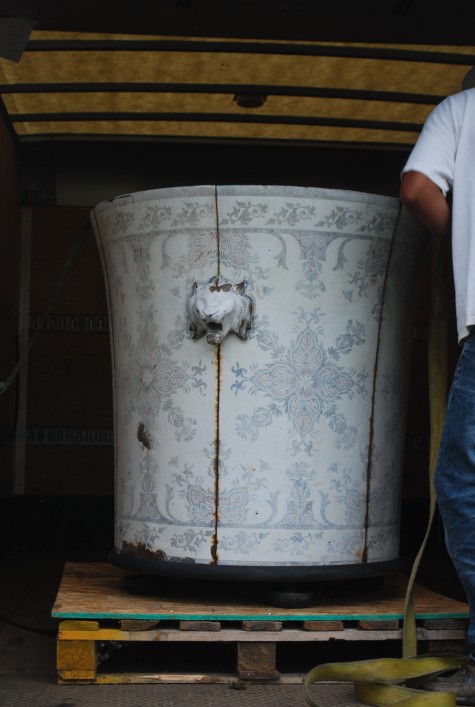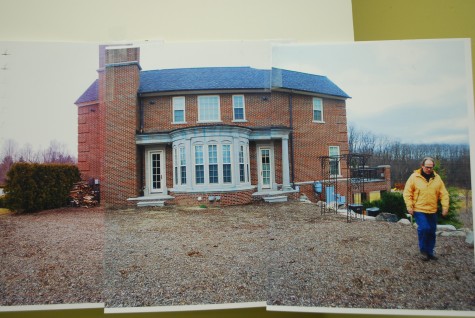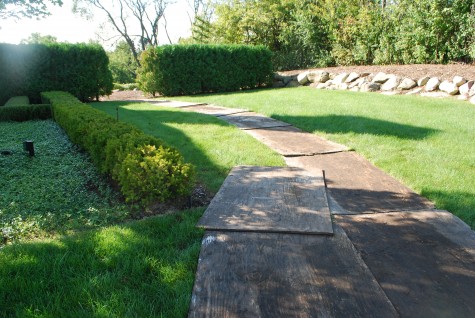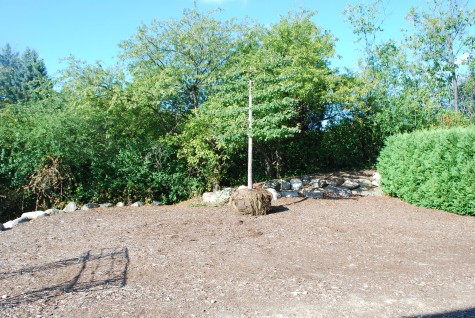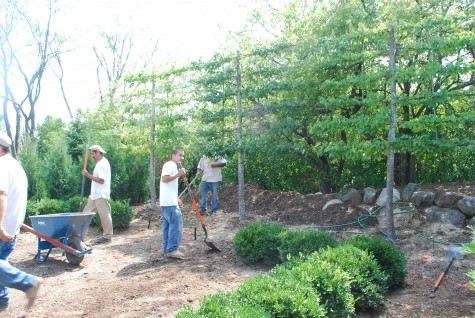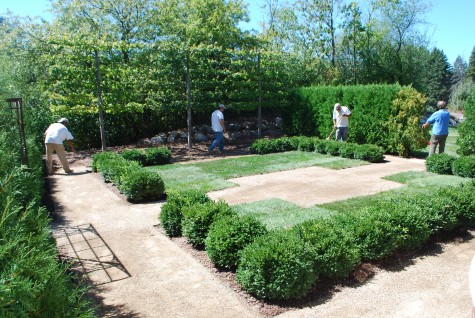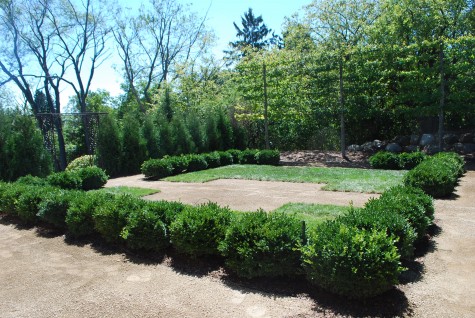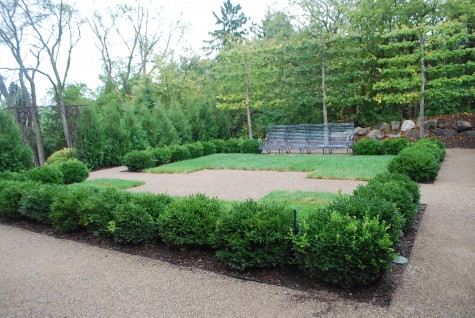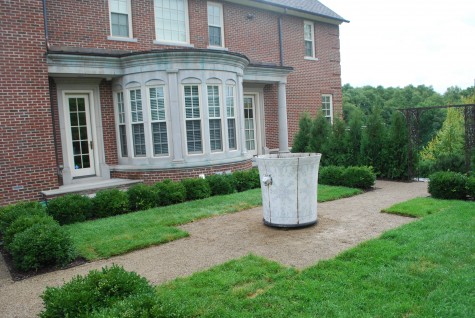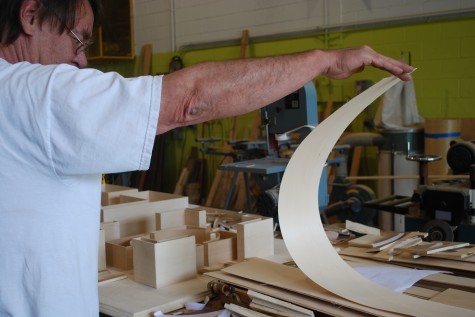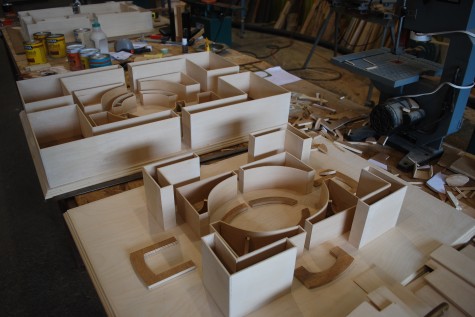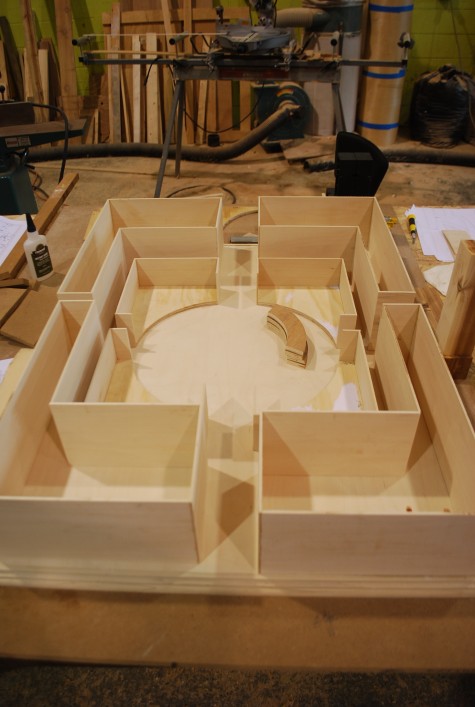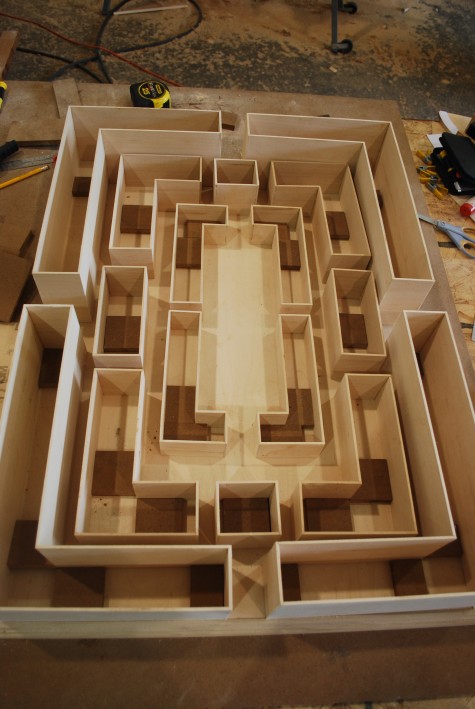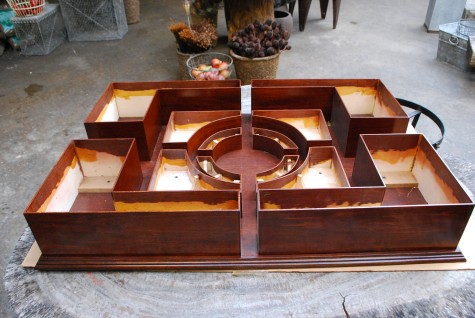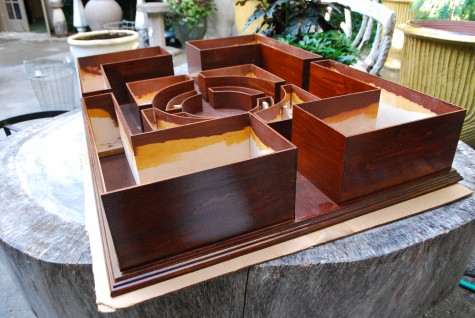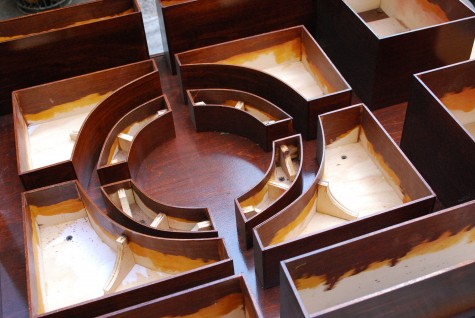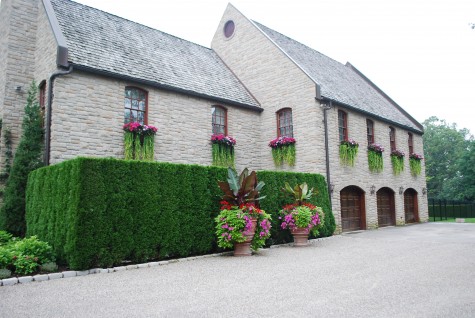 A camera is one tool a gardener should not be without. You will not remember what your garden looked like on June 2, when it is the following March and you are trying to put a plan together for the new season. No matter how simple the device, a camera provides a valuable record of that which is by definition ephemeral. No landscape has a pause button. It is always changing. Some things I do differently every year. I want to remember what was. I am not a photographer; I take snapshots of projects under construction. I try to photograph all the annual plantings-although this year I am way behind getting that done.
A camera is one tool a gardener should not be without. You will not remember what your garden looked like on June 2, when it is the following March and you are trying to put a plan together for the new season. No matter how simple the device, a camera provides a valuable record of that which is by definition ephemeral. No landscape has a pause button. It is always changing. Some things I do differently every year. I want to remember what was. I am not a photographer; I take snapshots of projects under construction. I try to photograph all the annual plantings-although this year I am way behind getting that done.
 I do believe that gardens are never wonderful every day, day after day, but they do have their moments. Ursula Buchan’s book “The English Garden” is chock full of the most amazing photographs of gardens at their perfect moment. I don’t always know when one might present itself, so I drag my camera everywhere. The camera is a monocular machine, and records nothing of my emotional investment in my garden. There are times when it can see better than I. It helps me to see what I may be missing, or figure out what I do or so not like. If you are like me, it takes a while to sort out what you would want to do again, and what you might not want to repeat.
I do believe that gardens are never wonderful every day, day after day, but they do have their moments. Ursula Buchan’s book “The English Garden” is chock full of the most amazing photographs of gardens at their perfect moment. I don’t always know when one might present itself, so I drag my camera everywhere. The camera is a monocular machine, and records nothing of my emotional investment in my garden. There are times when it can see better than I. It helps me to see what I may be missing, or figure out what I do or so not like. If you are like me, it takes a while to sort out what you would want to do again, and what you might not want to repeat.
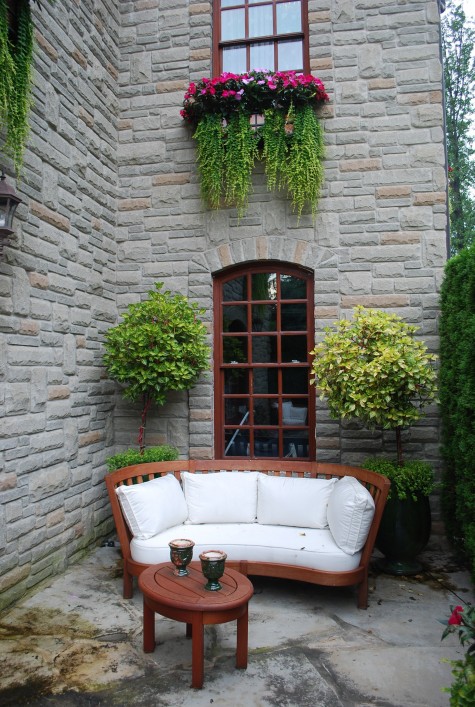 These two irisine topiaries are very different shades of green. One gets a little more sun than the other. How plants grow is very much dependent on their siting. Growing perfectly matched pairs of plants even under conditions you would think were identical is difficult. If you go back to my previous picture, you will see what I mean. Uniformity of growth is an important issue to hybridizers for exactly this reason. These are the kinds of things that occur to me when I look at my pictures.
These two irisine topiaries are very different shades of green. One gets a little more sun than the other. How plants grow is very much dependent on their siting. Growing perfectly matched pairs of plants even under conditions you would think were identical is difficult. If you go back to my previous picture, you will see what I mean. Uniformity of growth is an important issue to hybridizers for exactly this reason. These are the kinds of things that occur to me when I look at my pictures.
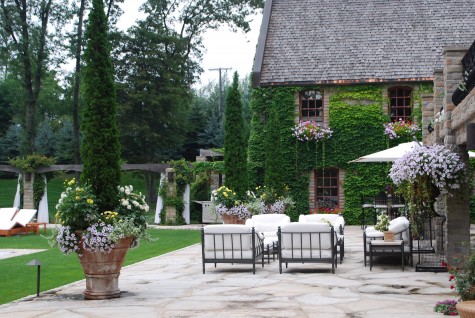 Color in a garden is delightful. Light colors read well and stand out against the dark greens that dominate the landscape. Pale yellow, lavender and white is a subtly elegant combination, and is repeated in these containers in different ways. It is hard to do any photographing on a sunny day. If you are an accomplished photographer, you will know what to do to get your camera lens to squint-this is a skill I do not have An overcast day will permit pictures in which the color is saturated, as the light is even all over.
Color in a garden is delightful. Light colors read well and stand out against the dark greens that dominate the landscape. Pale yellow, lavender and white is a subtly elegant combination, and is repeated in these containers in different ways. It is hard to do any photographing on a sunny day. If you are an accomplished photographer, you will know what to do to get your camera lens to squint-this is a skill I do not have An overcast day will permit pictures in which the color is saturated, as the light is even all over.
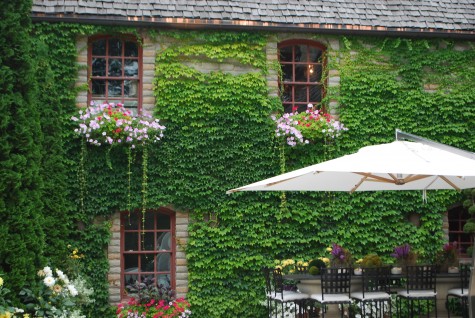 Window boxes that are up high benefit from a simple planting, as you see a mass from a distance, not individual plants. Vinca maculatum makes a great trailer. They grow very long; their chartreuse variegated leaves are large and interesting. When I look through the lens of my camera, I see things in a different way. As a picture has four edges, it can help force me to compose. There is something interesting going on at every level on or against this very tall wall. I have a picture of that.
Window boxes that are up high benefit from a simple planting, as you see a mass from a distance, not individual plants. Vinca maculatum makes a great trailer. They grow very long; their chartreuse variegated leaves are large and interesting. When I look through the lens of my camera, I see things in a different way. As a picture has four edges, it can help force me to compose. There is something interesting going on at every level on or against this very tall wall. I have a picture of that.
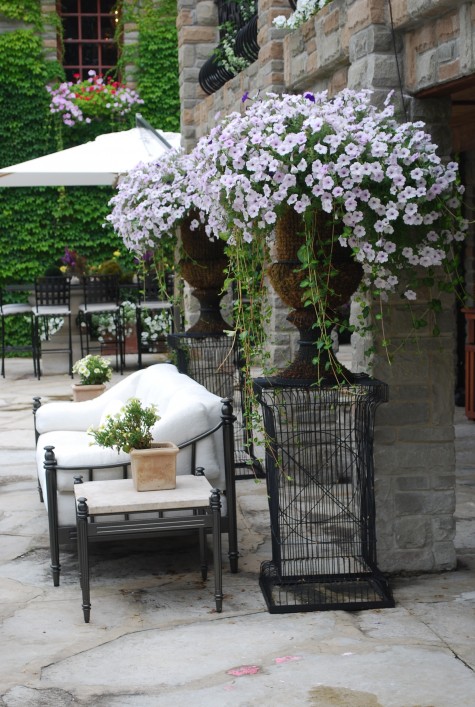 This wirework urn was planted with a single 10 inch basket of mini-petunias. The plant is obviously happy with this location, and the amount of water is it getting. I am also certain they are getting a regular feeding. The vinca will reach the ground in another few weeks. I would plant petunias here again.
This wirework urn was planted with a single 10 inch basket of mini-petunias. The plant is obviously happy with this location, and the amount of water is it getting. I am also certain they are getting a regular feeding. The vinca will reach the ground in another few weeks. I would plant petunias here again.
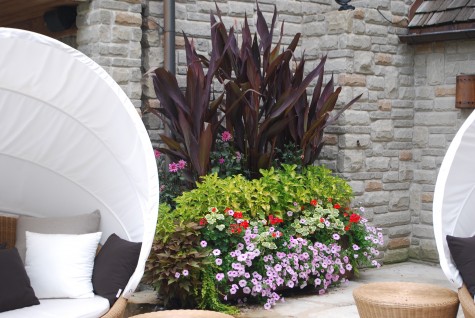 This iron cistern placed in a corner reds on its own, as it is isolated from the main terrace. I have planted darker versions of the yellow and lavender. On a whim, I added some orange bullseye geraniums. Not everything needs to match. The dark foliaged cannas look great with the stone and the trim on the house-this was not at all in my mind when I planted. I have my camera to thank for bringing this to my attention.
This iron cistern placed in a corner reds on its own, as it is isolated from the main terrace. I have planted darker versions of the yellow and lavender. On a whim, I added some orange bullseye geraniums. Not everything needs to match. The dark foliaged cannas look great with the stone and the trim on the house-this was not at all in my mind when I planted. I have my camera to thank for bringing this to my attention.
 The planting in this Italian olive jar is pleasing in its overall shape, and growing robustly. Set in a very shady pot, who knew the moss growing on the side of the pot would play such a big roll in the planting.
The planting in this Italian olive jar is pleasing in its overall shape, and growing robustly. Set in a very shady pot, who knew the moss growing on the side of the pot would play such a big roll in the planting.
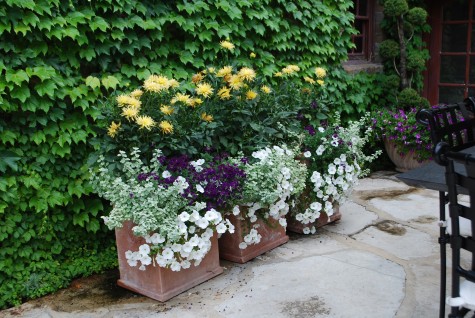 Dahlias have dramatic flowers, but they come with with a lot of green leaves. This picture suggests to me that maybe dahlias are better planted low, where the tops of the plants are the main view. Or perhaps they need a plant will grow up in front of all that green without jeapordizing the health of the dahlia. The flowers look like they are floating. I have time before next season to figure out what would work better. All of my snapshots will be a big help.
Dahlias have dramatic flowers, but they come with with a lot of green leaves. This picture suggests to me that maybe dahlias are better planted low, where the tops of the plants are the main view. Or perhaps they need a plant will grow up in front of all that green without jeapordizing the health of the dahlia. The flowers look like they are floating. I have time before next season to figure out what would work better. All of my snapshots will be a big help.
